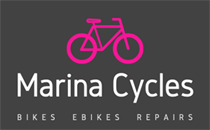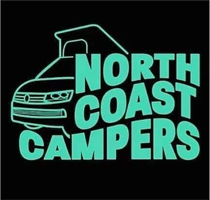I’ve been wanting to learn how to build wheels for years, eying up Edinburgh Bike Co-op’s course and reading various bits and pieces. While I can replace spokes and true battered hoops, putting one together from scratch seemed a black art. Earlier this year, I bought a copy of The Professional Guide to Wheel Building, by Roger Musson of Wheelpro. Reading it left me thinking can it really be that easy, and scouting about for parts to build a spare set of wheels for the cross bike.
A few weeks ago I realised that the back wheel on the commuter warhorse was about to collapse, and as I’m loathe to spend any money on the old tank, I decided to make rebuilding that my first venture into the black arts. A new rim was a whole £17, Mavic XM117, what had already provided 3 years heavy service, meaning that I could reuse the old spokes and hub which were still in good condition.
Musson describes how to transfer the existing hub and spokes onto the new rim, and while it is a simple process, it was still time-consuming, I imagine comparable to lacing the spokes from scratch, but possibly less error prone to a newbie. Having already made a nipple driving tool from a Tesco “value” screwdriver (using mole grips, 12″ adjustable wrench for removing cassettes, gas hob, and a dremel with cutting discs), four hours later the truing stand held a rather loose and wobbly wheel consisting of the new rim and old spokes and hub.
With today’s ride called off at the eleventh hour, I decided to continue the project. Following Musson’s instructions again, I made a dishing gauge from a cardboard box, adding my own design tweak in the form of a bamboo skewer (it is as Heath-Robinson as it sounds :~) ). The process of taking up the slack in the spokes, maintaining lateral and radial trueness and dish, and final tensioning is completely an act of patience and method, anybody that has got through Zen And The Art Of Motorcycle Maintenance will understand. I even turned the radio off in order to concentrate the better while applying a tweak here and a tweak there.
So after 4-5 hours of additional fettling, my truing stand holds a hand-built wheel that looks fantastic (despite the hub being filthy), the spokes are tight and all give the same tone when plucked, and it runs as true as any wheel I’ve ever bought. Including tool making, the project took about 10-11 hours, has been immensely satisfying and educational, and I expect that next time it will be quicker as I have more idea of where I am going.
If I get a chance, tomorrow I’ll slap on the ice tyres and see how the new wheel holds up under use. Although I have to say that it looks so nice in the stand, I’m loathe to subject it to the salty road grime that finally killed the old one ;~)
So while I still haven’t got out for a ride, I’m feeling some bike mojo trickling back.







Very interesting Ryszard. Wheel building has been an idea in my head for a while, maybe 2012 is the time to make it happen.
Hats off to you Ryszard,
Your story almost inspired me to give it a go, although the “4-5 hours of additional fettling” and the “project took about 10-12 hours” has me pondering. Although, we all know you’re 10-12 hours are completed by the normal person in 5-6 hours 😉
“Some say it takes him till two in the morning to make chicken salad sandwiches……….all we know is………he’s called Ryszard!” 😛
I’m only kidding! I still need to master changing a gear cable and adjusting mechs before I considered tweeking spokes. This morning I received a new pair of brakes. What did I do? Started pressing the lever to see what the lever action felt like and now I can’t prize the pads open…..DOH!!
Yes I built up an mtb wheel with fair success main problem is truing /dishing(old fork and tyrap method) but with the right spokes for hub and rim and a bit of patience you can go for it just follow proper lacing pattern.
took wheel into Evans for proper truing they said it was only slightly out.10mins and I had wheel back no charge (contacts you see!!)
Hey Baz
I’ve just bled my rear brake and replaced the pads you should be able to push the pistons back into the caliper with GENTLE pressure .IF pads are in, slide a thin knife blade between pads and wiggle GENTLY till they open up and press back from whence they came.IF pads are out be extra carefull with pistons as some have wee studs that are for the spring on the back of the pads to hook to use a blade on edge of piston ( not centre stud) till you can get a small spanner on to push pistons.If you snap these off it’s new piston time (not good)Also if bleeding is in order, take advantage of Ryzsards bleed kit site.
ps// be carefull with brake fluid don’t hold blled screws or the like in your teeth cause apart from being harmfull to humans it tastes like old pennies dipped in aftershave and stings and makes your lips numb…yes i forgot this in a moments madness.
I have rebuilt my works hack back wheel 3-4 times. As long as I have another wheel to use as a template I’m OK. The first wheel I built was an old duffer that a bike shop was throwing out, I stripped it down and built it as a test wheel a couple of times, saved killing a decent wheel. Get the spoke length correct to start with. I can get them perfectly true and almost round, maybe 1-2mm out but the dishing (Centring in the frame) can be a pain.
I found that following Musson’s directions, the wheel pretty much dished itself, was amazing to watch it happen. The tolerances are also well within 1mm – I’m not taking any credit for that, I was only following orders. I may have been lucky, but I’m itching to try again :~)
Having said that, I still have to ride the thing, but as stress-relieving it didn’t knock it out of true, I’m optimistic.